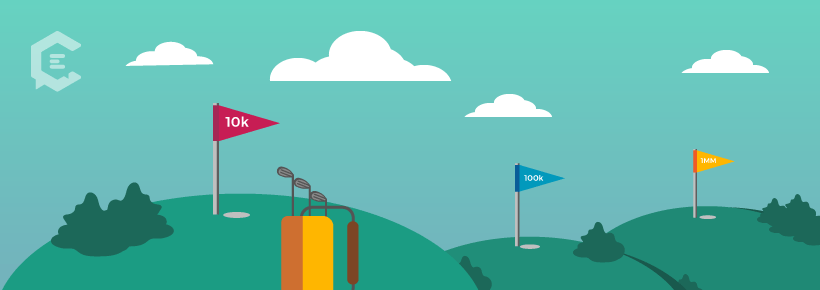This is the fourth installment of the Content Partner Strategy series, where we look at the rapidly changing landscape of branded content partnerships. In this installment, we help you keep your sites real.
It starts off in elementary school, when kids during PE class are prone to choose charismatic classmates to be on their team even before they choose the best athletes. And continues with high school, when everyone wants to be friends with the prom king and queen.
Twenty-five years later, you have a budget for your business and you’re wondering — sometimes against your own will — whether you need to hire that local celebrity to promote your business. Or, in the social media era, do you need the $,1500 per post influencer who has 250K followers instead of the nicer one who has only 20K followers and is always nice to work with? When you think about pitching your business to media outlets, a Wall Street Journal placement always seems like more of a brass ring than a feature in a trade magazine.
Our fixation with being associated with the most prominent names and profiles is practical in one sense and completely psychological in another. In this installment of our content partner strategy series, we look at five scenarios where a marketer or business owner could go after that “big name” association or pick a more modest alignment. Based on their goals, we decide the most prudent partnership. (Also see our related guide on launching a brand ambassador program.)
Right-sizing the scope of a content partnership: When to go big or small?

1. Influencers — 10K, 100K or 1MM followers?
One of my clients is an e-commerce site with a very analytics-based approach to calculating ROI. In terms of sales, the owner recently calculated that his site needed to work with 1,000 “micro-influencers” (30,000 followers or less) for product only, or 250 mid-tier influencers (100K followers or more), for product and payment in the $300 per post range. His estimate was based on reviewing the average number of new customers referred by influencers at these two levels. A micro might bring 3-4 sales, while a mid-tier influencer got 16. Micros don’t demand cash payment, but the amount of product you have to send out in order to get sales evened out the spend.
Of course, he isn’t taking into account things like increased visibility, brand recognition and increased credibility. Because they’re intangible. As a numbers guy, he is looking at numbers, and his findings are: Yes, the numbers prove that 4x more numbers get 4x more sales.
But here’s where things get really wild.
You expect that the returns probably increase consistently with follower numbers as we get above 500K and into the millions? Sorry, but I must destroy your trusting nature by telling you that I just worked on a collaboration with an influencer who has 13 million followers. She referred 6,000 people to my client’s site through an Instagram story shoutout. The total number of sales she generated? 6. Six.
This brand did not pay the influencer for the shoutout. She just mentioned it because she liked an item, which leads me to my final point. The way you absolutely know you chalked up a big win with a celebrity or macro-influencer partnership is if you didn’t pay them at all.
2. Lifestyle websites – National or local?
In fashion, beauty, or any other CPG category (consumer packaged goods) that does a lot of online sales, a mention from a major outlet (Buzzfeed, AskMen, PopSugar) plus a link back from a site with high domain authority can be your biggest traffic referral source of the year. And the next year. Without a link, the referral traffic drops off a cliff. So it makes sense that any consumer brand would have its PR team on a daily hunt for those high-value mentions in major publications.
However, if you’re a neighborhood restaurant, bar or brick-and-mortar independent retailer in a not super-touristy city, a shoutout from a national publication may not drive all that much traffic to your door. The media hits that are much more effective will probably be local publications, or digital outlets like Thrillist and Zagat that have regionally focused editions (especially the ones with email newsletters). Those are also typically easier to crack, as the editors need a steady flow of local news and ideas. Regional PR, smaller target list, easier-to-build relationships… all less expensive than a national campaign.
3. Traditional publications – Trade or consumer?
“Is it the Wall Street Journal, or is it [literally any other publication]?” a corporate publicist of the old-school vintage recently asked in a conversation. That is how old-school publicists and executives tend to think — although you can swap out the WSJ for the NYT or USA Today or Town & Country or Bon Appétit, depending on the person’s priorities. A mention in one of the prestige publications does represent a pinnacle of recognition, and it’s why ambitious business execs of any stripe always put them top on a target list.
But being in any of these publications, even repeatedly, may not assist certain types of B2B marketing and sales goals. In fact, the humble yet laser-focused trade publications can actually be much better at getting industry-specific news out in a way that generates sales. Example, a food company client of mine just launched a new deli meats line. Where did they want to be, the New York Times? No. In the food and beverage industry trade magazines.
4. TV show placement – Local or national?
The Bachelor Effect is real, make no mistake. If you manage to get a top-rated reality show to film at your restaurant, hotel or resort — you’ll see a lift in foot traffic and brand recognition, sometimes for years. But, you have to evaluate such opportunities carefully. If a show is new to a network, ask to know the time slot it’s airing. If it’s a pilot, make sure that it’s one definitely scheduled to air… If it’s a sizzle, no one outside the network may ever see it. Also, before you sign the deal, ask whether your venue/brand will be promoted verbally or with the signage shown on-screen, or in lower-third captions.
Is it worth it to cover cast/crew expenses, and maybe even pay a fee for this kind of exposure? Yes — if the show and the network are legit, the tradeout exposure is clearly defined, and as long as the shoot doesn’t go over your pre-agreed terms. Whether you’re hosting 80 crew and 20 cast members (a normal network hit show ask) or four crew and a host, it will disrupt your regular business — and many crews will run overtime if you’re not firm.
For less disruptive local TV coverage, the local morning and evening shows are the way to go. Some people still find satellite media tours and pay-to-play morning segments worth the expenditure, but opinions are very split on that, and in the days of digital video and social media, there are probably better ways to spend $,5000.
5. Bylined articles – Prestige journalist or regular?
Now this is an interesting question, as it potentially gives you access to all the talent you’d be working with in aforementioned categories — but from an owned content standpoint, meaning you own their output and distribute it yourself. They may not even want a byline. So now we come to the question, if that former Vanity Fair editor can write the story of your business for $6,000/2,000 words, is it worth it for the quality of the writing? Is it worth it because you hope having them as part of your team will earn a little boost of extra respect for your brand?
The first is entirely subjective. The answer to the second is, sadly, as many Vanity Fair and Fortune editors have learned, once they’re no longer with the publication, their name doesn’t mean much to the average reader.
In this case, you can probably look for an equally good writer without quite the credentials and pay them half as much — and you may find that they’re easier to work with to boot.









